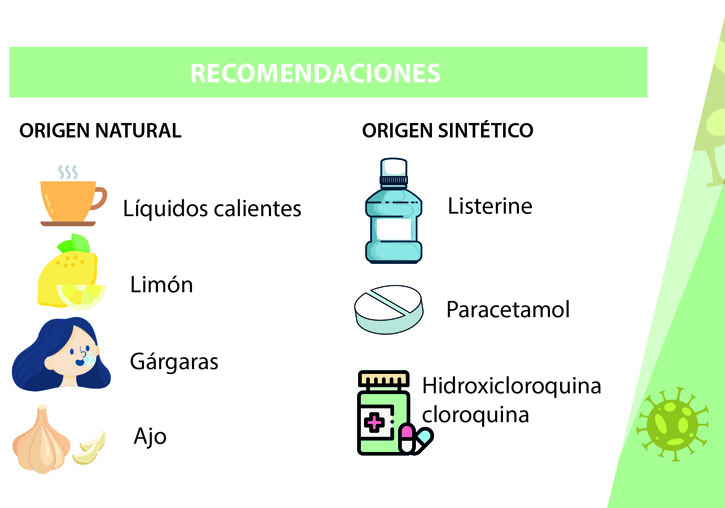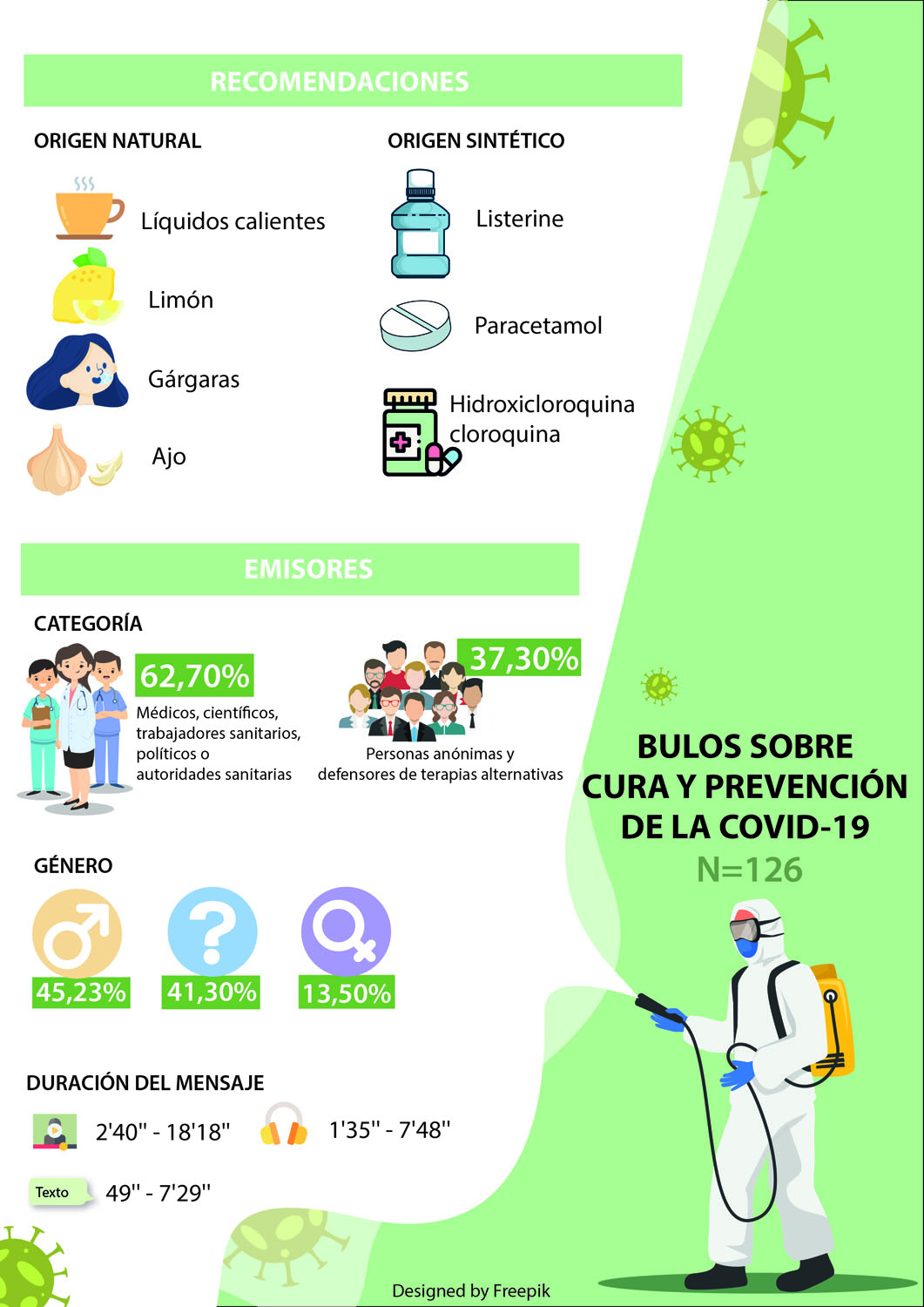
Three researchers from the University of Valencia led by the professor of Journalism Carolina Moreno have published a study in which they analyse the hoaxes disseminated through WhatsApp in Spain during the COVID-19 pandemic, with the aim of identifying what type of substances were promoted to be consumed. One in five text, video or audio threads was about the prevention or cure of the coronavirus, arguing on the principle of medical authority and basically promoting the use and consumption of substances of natural origin.
Most of the hoaxes promote the consumption of substances related to the classic home remedies against the flu, such as taking Vitamin C, garlic or honey, or inhaling steam. Other hoaxes include not putting on moisturisers that SARS-CoV-2 could stick to; gargle with antiseptics, disinfectants, or antibacterials; taking antimalarials, such as chloroquine and hydroxychloroquine; as well as irrigating the nasal area with alkaline solutions or applying hot air to this area with a hair dryer. According to the study, COVID-19 would also be prevented by being exposed to the sun, with a diet rich in alkaline foods or with an anti-virus ionizer in the car, among others.
“The main objective of the work was to identify the typology of hoaxes that were circulating through private messaging during the state of alarm in Spain for COVID-19; that is, how did these viral messages reach the public without scientific evidence (through images, photos, audios, texts, etc.), about what type of substances or actions were discussed in the disseminated messages; and who transmitted the messages (through two variables: the professions and the gender of the actant)”, highlighted Carolina Moreno. The article published in the Gaceta magazine is also signed by researchers Empar Vengut, Lorena Cano and Isabel Mendoza.
Regarding the message sent by the hoaxes, the prevention of infection by SARS-CoV-2 was the only issue of 50.8% of the messages; healing in 31.7%; the two objectives combined was 7.9% of the cases; and messages that only intended to recommend actions represented 9.5%.
In most of these materials, it has been verified that the subject who appeared in the hoaxes was medical personnel (36.5%), anonymous person (30.9%), political personnel (12.7%), scientists (9.5%) and individuals who advocated for alternative therapies (6.3%). 3.9% were formed by other types of health personnel. Regarding gender, 45.2% of the hoaxes, collected between March 18 and April 18, had men as protagonists, while 13.5% were women.
Due to their type, most of these messages were text threads (39%) and videos (30%). Of them, the videos lasted between two and a half minutes and almost 19 the longest, while the audios were shorter, between a minute and a half and up to a maximum of almost eight.
The article highlights that the volume of these messages in the analysed period corresponded to the phenomenon called infodemic, a term coined by the WHO to describe the disinformation produced in situations of generalised alarm and conspiracy theories.
Methodology
To carry out this study, a telephone number was enabled to receive hoaxes on WhatsApp. 2,353 messages were obtained, of which 584 hoaxes were identified. Of these, a subsample of 126 was selected. Most of these documents were videos (38) and text strings (49), as well as other materials (photos, infographics, screenshots, etc.). This study has been carried out in the context of the European project No Rumour Health, coordinated by the University of Valencia and in which various European countries participate.
Article: Moreno-Castro C, et al. «Estudio exploratorio de los bulos difundidos por WhatsApp en España para prevenir o curar la COVID-19». Gac Sanit. 2020. https://doi.org/10.1016/j.gaceta.2020.07.008
Annex images: Moreno-Castro C, et al. (Gac Sanit. 2020)
Images:
.jpg)










